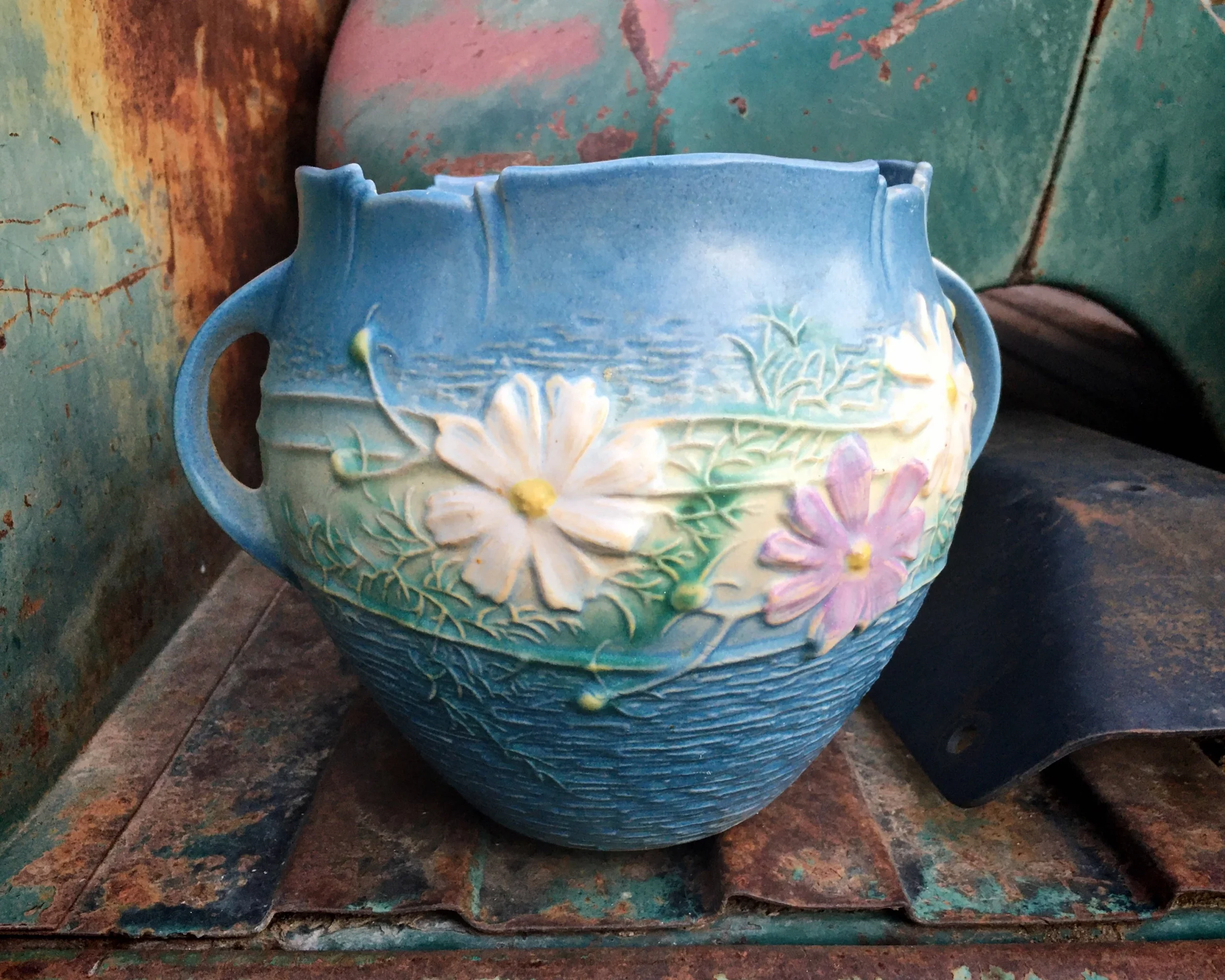If you appreciate and collect Americana or have found some charming bowls and vases in your possession, you may want to know more about Roseville Pottery. This type of pottery is one of the most important and famous to come out of the United States.
Today, we will tell you about these fantastic antiques – their history and most famous patterns. We will also let you know how to identify Roseville pottery patterns.
Table of Contents
What is Roseville Pottery?
Roseville Pottery is perhaps the quintessential American design. Utilitarian and naturalistic, many potters designed Roseville pottery to capture the aesthetic and spirit of the American Frontier.
History
To fully appreciate Roseville Pottery, you need to understand the cultural and political climate in which it emerged. The earliest pieces of Roseville Pottery were manufactured during the height of the Arts and Crafts movement. While the history of the movement is beyond the scope of this article, we will focus on this movement’s aims.
The main goals of the Arts and Crafts Movement were:
- To take inspiration from nature when designing products.
- To create products that were both useful and beautiful.
- To make products using one’s hands instead of machines.
The Roseville Pottery Company, the producer most associated with Roseville Pottery designs, was founded on these principles in 1892. From these humble beginnings in Ohio, Roseville designs gradually became some of the most popular in the United States.
Characteristics
While we find the history of Roseville fascinating, if you want to collect some, you need to know the main characteristics of this pottery.
The main characteristics of Roseville Pottery are:
- Legitimate Roseville Pottery does not come in extravagant colors. The Arts and Crafts movement that inspired Roseville Pottery was one of the working and middle classes and eschewed unnatural colors. As such, the majority of Rosevilles you find will be finished with a natural, clay color. Browns, subtle greens, and gold are the colors most associated with Roseville Pottery.
- As mentioned above, the inspiration from the Arts and Crafts movement is self-evident when you look at the design and imagery on many Rosevilles. You will notice that many pieces include leaves, pinecones, and flowers.
- The Roseville Company did not design Roseville Pottery to be decoration. Each piece was designed to serve a specific function. Due to this fact, the company manufactured many different lines, such as a line of umbrella stands, cornucopia, and flower pots.
In summary, you can recognize a Roseville Company product by these three characteristics – its earthy colors, its natural design, and its function.
Manufacturers
The Roseville Pottery Company was the manufacturer of Roseville Pottery. Beginning production in 1904 after incorporation in 1892, the company started to produce a wide variety of products from its factory in Zanesville, Ohio. Practical products such as pitchers, planters, and baskets were at the core of the company’s strategy and philosophy.
The company continued producing Roseville Pottery for half a century. The company was fantastically successful, with a wide variety of products selling well up until the 1940s. However, Competition from Japan and a change in tastes forced the company to declare bankruptcy. The company shuttered all operations in 1954 after being purchased by the New England Ceramics Company. To this day, no Roseville pottery has been produced in Ohio since the company’s closure in the 50s.
The Most Famous Roseville Pottery Patterns and Designers
Over half a century of production, the company has produced many fantastic Roseville patterns that have stood the test of time. If you are interested in collecting Roseville Pottery, you should look into getting some of these designs.
Blackberry Pattern
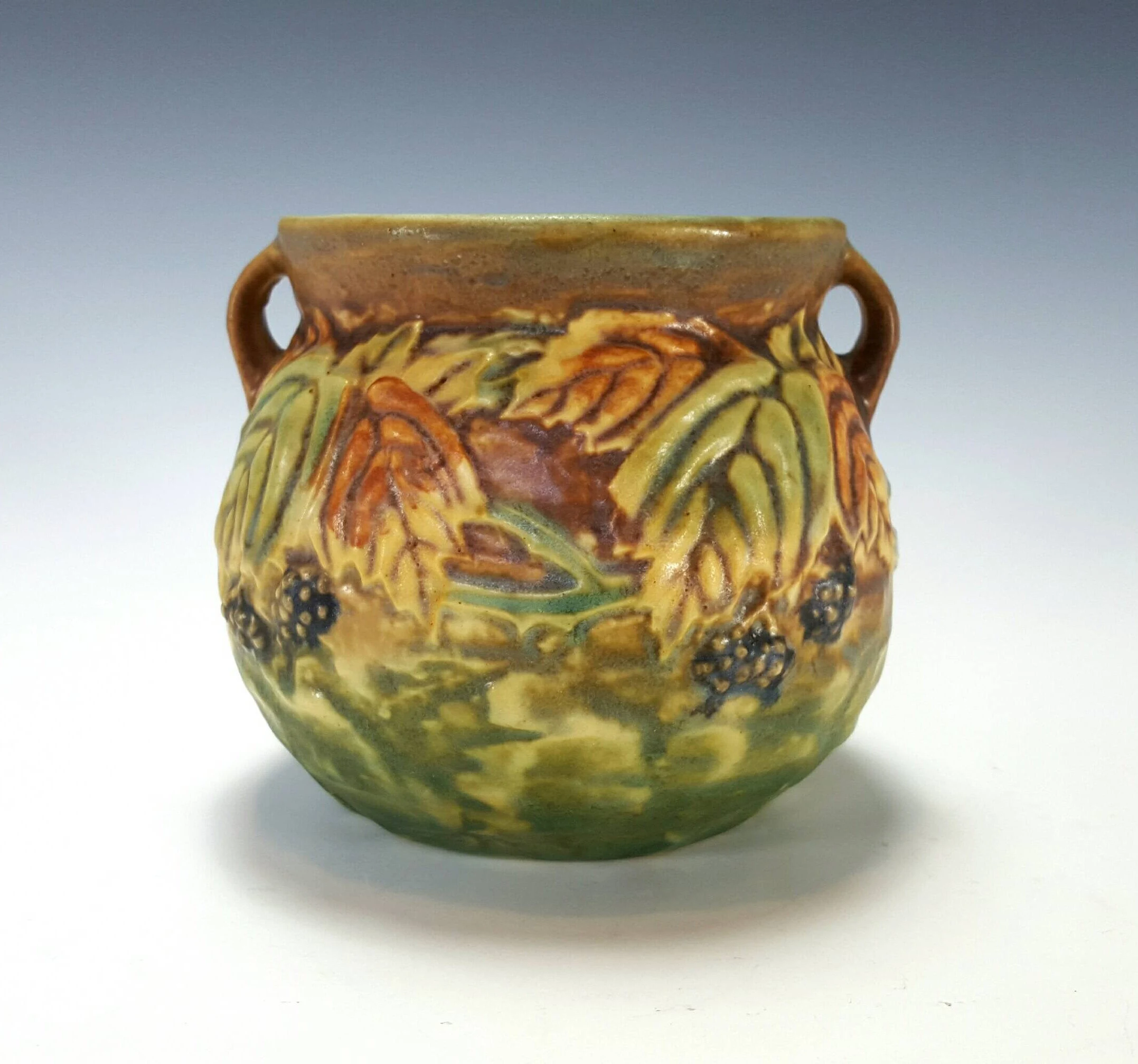
Beginning production in 1932, we believe that the Blackberry pattern vase is one of the best. This pattern is also extremely popular amongst collectors. This pattern consists of green vines with several multicolored leaves. If you have a Blackberry in very good or excellent quality, you could sell it for over $400.
Pinecone Pattern
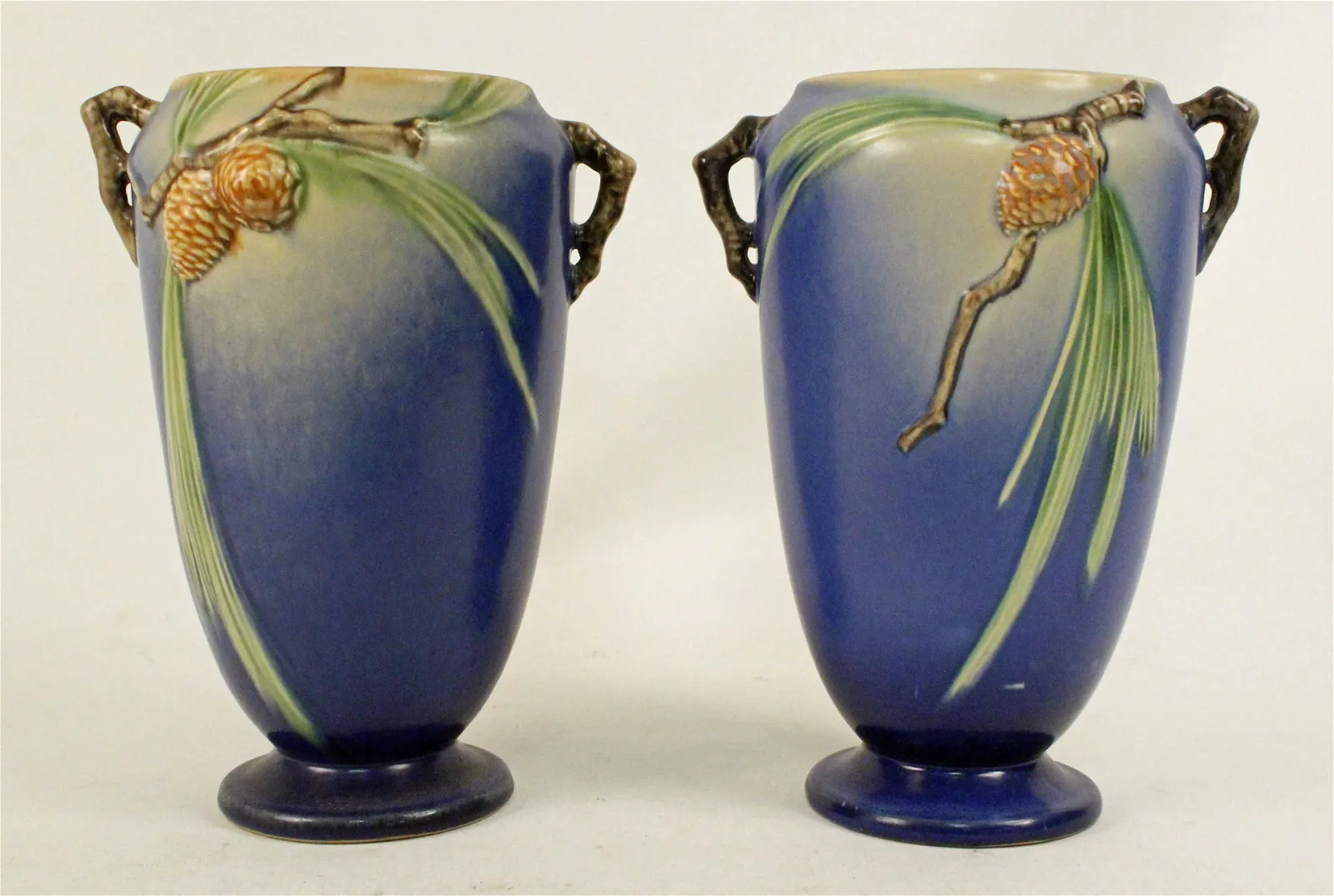
If you know of any piece of Roseville Pottery, it is the Pinecone pattern. Designed by Frank Farrell and manufactured in 1935, we adore the Pinecone. The company used this pattern on a whole host of tableware, such as bowls, window boxes, and vases. If you have a blue, brown, or green Roseville with a Pinecone on it, you may possess one of the most famous pieces of pottery ever to come from the company.
Moss Pattern
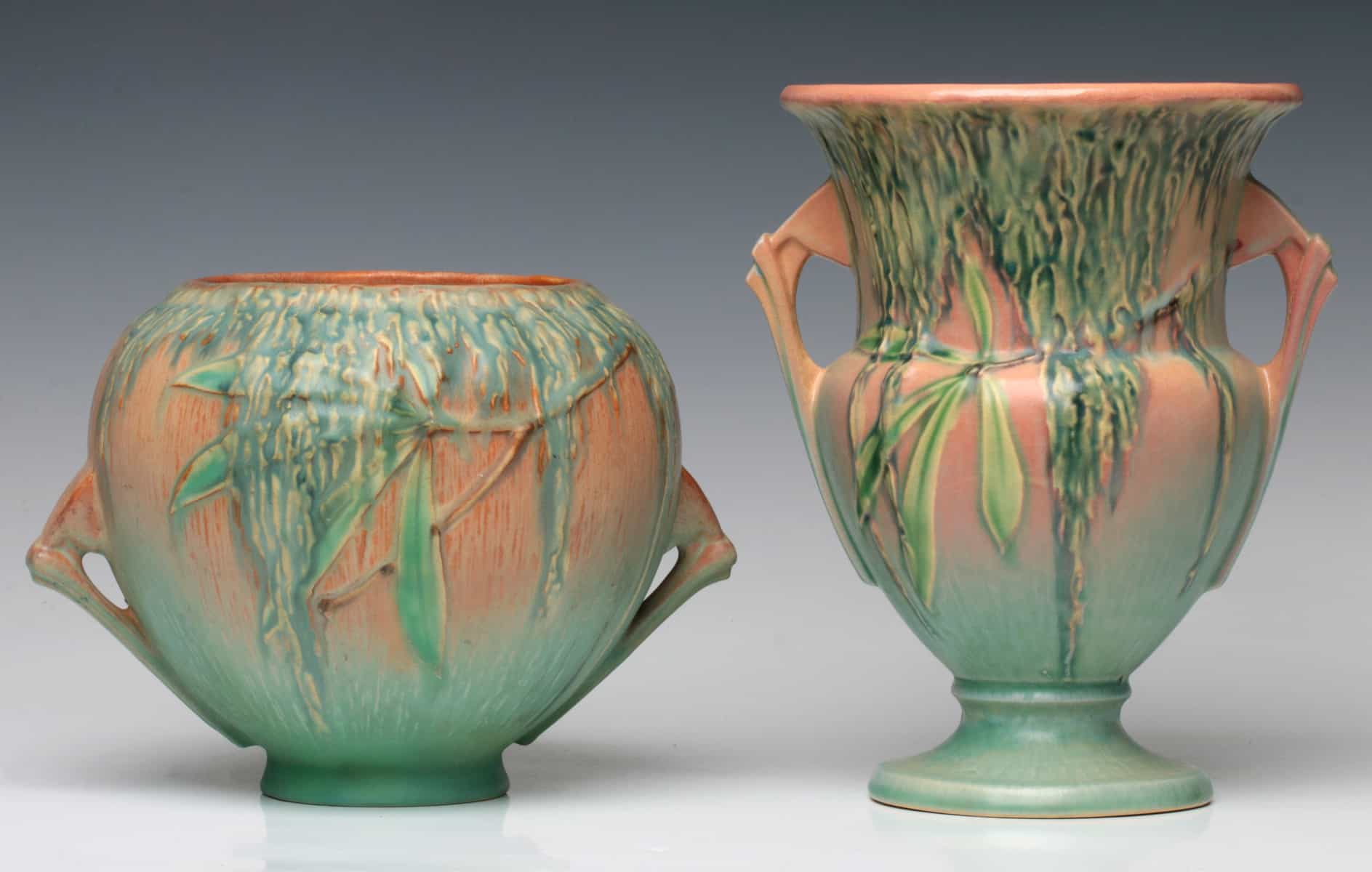
The Moss pattern is another popular Roseville from the middle of the company’s life. The Moss is unique; it deviates from the traditional Americana of other Rosevilles. Instead, Moss follows an art deco style and comes in many bright colors (such as peach, pink, and blue).
Baneda Pattern Vase
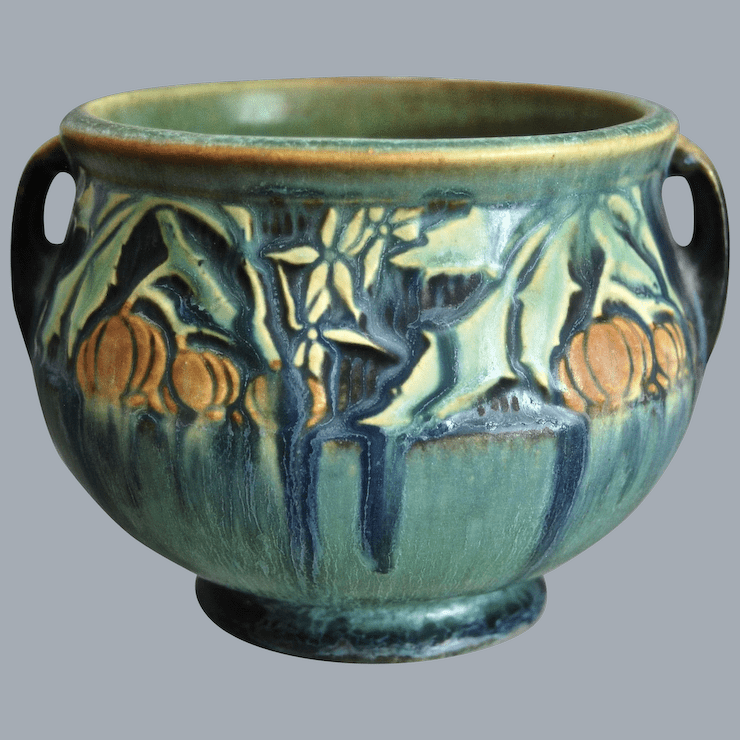
Baneda is another popular pattern from the 1930s. You can find Baneda vases in two colors; green and pink. This pattern is highly sought after by collectors – for example, a Baneda vase in excellent quality sold for over 600 dollars at auction.
Foxglove Pattern Vase
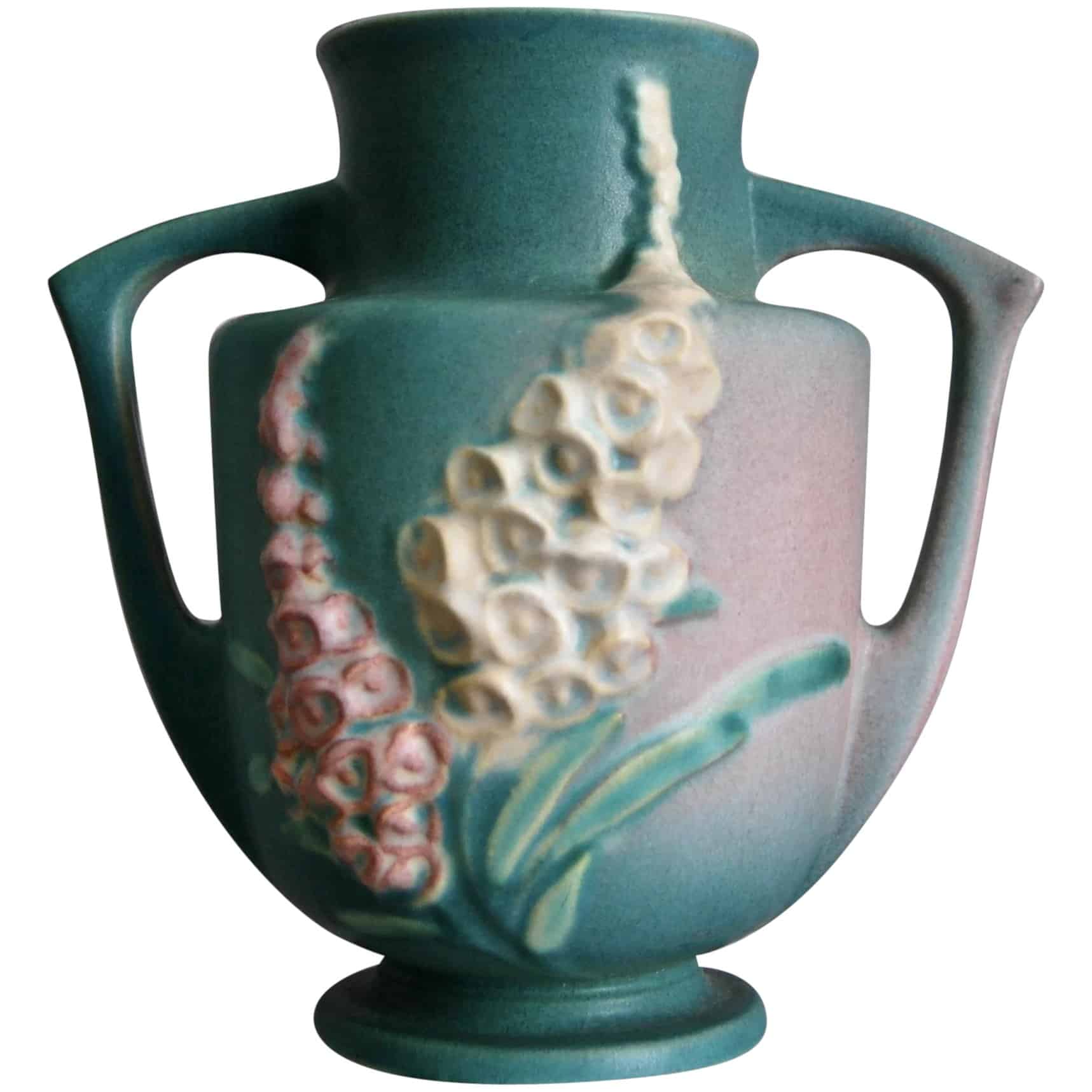
The Foxglove pattern is a popular piece with collectors. First created in 1942, we love this piece because of its striking colors and the variety of shapes it comes in. This pattern is named after the foxglove flowers that the Roseville Company used as the centerpiece of this pattern’s design.
These are just five of the most famous patterns. The Roseville Pottery Company produced many more, such as the Zephyr Lily, the Apple Blossom, and the Della Robbia.
Famous Roseville Designers
What made the Roseville Pottery Company special was the importance designers had in the manufacturing process. Many of the era’s most famous designers worked at the company at some point in time. In this section, we will discuss some of the most famous designers that worked at the company and the popular products they created.
Ross Purdy
The first designer ever hired by the Roseville Pottery Company, Ross Purdy, was vital for setting up the company for future success. While Ross was only with Roseville for a few years, he refined the company’s traditional Arts and Crafts style during this time. Even today, his designs are still highly sought after by collectors.
He produced one of the company’s most famous products – The Rozane line.
Frederick Hurton Rhead
The Rhead brothers produced some of Roseville Pottery’s best and rarest products. Frederick Hurton Rhead innovated the entire design process by trying out new glazes on every product. These innovative methods produced lines such as the Cremo while improving the Roseville Rozane. Two other famous lines made by F. H. Rhead include the Aztec and Egypto, both of which were popular in their day.
Harry Rhead
Frederick’s brother Harry took the position of art director when his brother left the company. Harry shifted the focus of Roseville away from hand-crafted goods to products that required less labor. This shift would be a boon for the company, allowing them to produce more popular designs. This includes the design Harry Rhead is most associated with, the Donatello. Other famous lines he was associated with include the
Frank Ferrell
However, Frank Ferrell is easily the most famous and prolific art director the Roseville Company ever had. Joining the company in 1918, Frank would stay with the company for over 30 years, producing designs such as the Sylvan, the Dogwood, as well as the ever-popular Pinecone.
How Do You Identify Roseville Pottery Patterns?
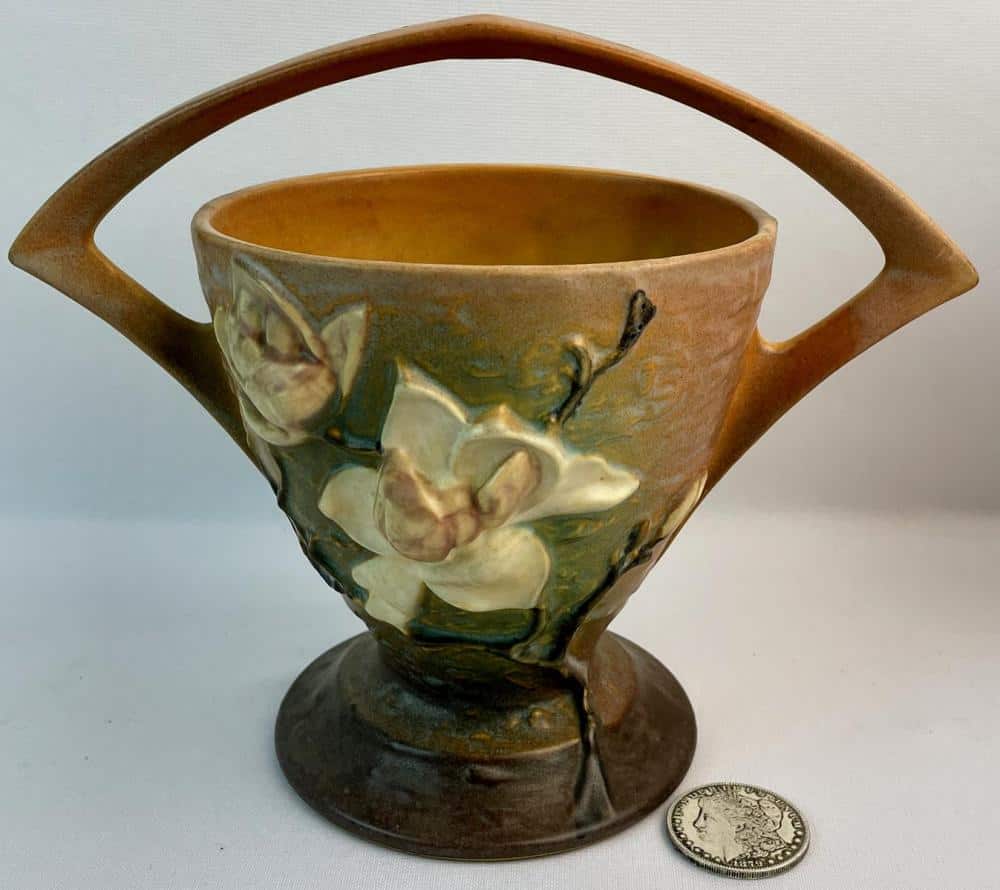
Due to the popularity of Roseville Pottery, many companies have produced illegitimate replicas that, while they look like true Rosevilles, are not. To avoid purchasing a reproduction, look at the following features before buying any piece of Roseville Pottery.
- Quality of Details: If you have doubts about a piece’s origin, look at the details first. True Rosevilles are detailed. Replicas, on the other hand, look sloppy in comparison. For example, if you are looking at a Foxglove, closely analyze the flowers. If they have plenty of detail, it is likely the real deal.
- Production Marks: Another key indicator of a fake product is the lack of quality pottery marks. Learn the difference between marks from each period of the company’s history and compare them to the piece you are considering. If the script looks different, you should look elsewhere.
- Weight: Roseville Pottery is heavy since they used denser clay than other pottery companies. If a piece of pottery feels too light or unbalanced, it is probably a more recent replica.
- Mediocre Colors: The colors of Roseville Pottery, even the more earthy tones, are distinct. If the colors of your piece or too bright or muddy, you are unlikely to have a real product.
- Low Prices: Finally, real Roseville Pottery is rare and, as such, expensive. If the price seems too good to be true, it likely is.
In summary, regardless of how old a piece of Roseville Pottery is, it should still be of high quality. A replication will struggle to match the high quality that the Roseville Company produced. If you have any questions, make sure to ask legitimate dealers for their opinions.
What Do The Numbers Mean on the Bottom of Roseville Pottery?
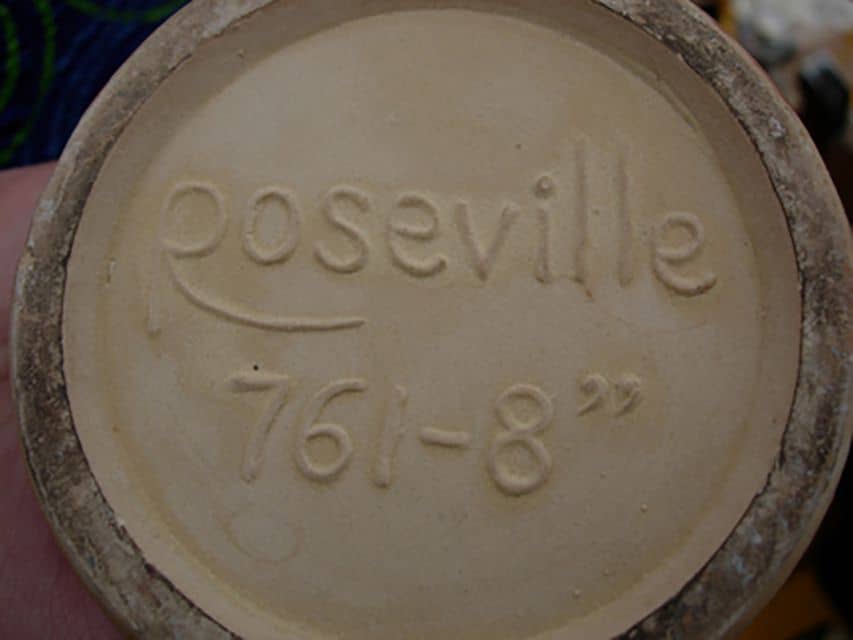
If you own or analyze certain pieces of Roseville Pottery, you may notice marks and numbers etched into the design. What are these numbers? What do they mean?
These marks are pottery marks, which companies included to classify and differentiate various pieces. These pottery marks also changed over time, allowing collectors to identify older Rosevilles.
The Roseville company utilized different pottery marks over the years to classify its products. If you have a piece of Roseville pottery and want to figure out how old it is, compare it to our list below:
- The company marked pottery with RPCo from its founding in 1904 to 1920. If a piece of pottery has this mark, it is likely one from one of the oldest production runs.
- The next oldest marking is the Rozane model (a combination of Roseville and Zanesville). The company manufactured pottery with this marking in the early-to-mid 1920s. If you find a piece with a model line, you may have struck gold because collectors love these.
- Rv. A less common mark. The company engraved pots with this mark between 1915 and 1925.
- Roseville Pottery Company. This mark is one of the earliest used by the company. Any piece that possesses this mark comes from before 1930.
- Indented Roseville USA. If the mark of your Roseville pottery leans slightly to the right, you may have an Indented Roseville mark. These marks are much rarer, as the company only engraved pots with this mark for five years between 1932 and 37.
- Raised in Roseville USA. If you have any Roseville Pottery, it probably has this mark. The Raised Roseville, USA mark is the most common mark, employed from 1937 until the company’s closure.
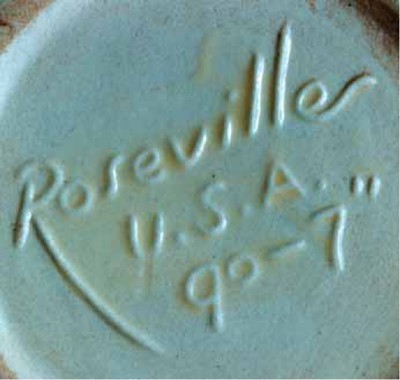
However, you may find that your Roseville does not have any markings. Between 1927 and 1935, the Roseville Company used a small black triangle or foil label instead of traditional pottery markings. These paper labels were not designed to stand the test of time. As such, you can’t find any markings on these pieces, even on legitimate Roseville Pottery.
These are not the only kinds of markings you will find on Roseville Pottery. If you study any Roseville closely, you may notice a sequence of numbers close to the pottery marks. The Roseville company added these marks to help classify pieces as part of individual lines.
The format was as follows: 2-3 numbers, followed by a hyphen, after which were 1-2 other numbers. The first set of numbers identified the model/line of the piece (also known as the shape number), while the second set is height/weight measurements.
Conclusion
While the Roseville Pottery Company came to a bittersweet end after half a century, it left a lasting legacy. Roseville Pottery is still sought after by collectors due to its rustic charm, intricate details, and incredible variety.
We hope that this article has given you some insight into Roseville Pottery. With the information above, we hope you will know what to look for if you want to start collecting any of the company’s pieces.
